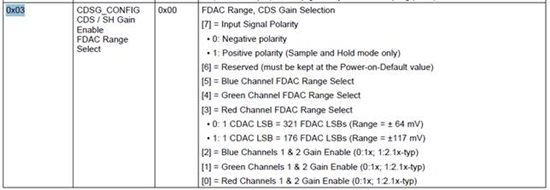Hi,
I would like to use the LM98620 6 Channel Imaging Signal Processor to interface with a 6 channel CIS from Rohm, one that is similar to the LSH1208-BD70A.
However, I don't quite understand the actual analog DC input range of the component. The datasheet specifies a recommended common-mode voltage of 1.65V at each OSR input. In addition, the input range of the ADC seems to be set at 0.98V to 2.23V. The CIS I want to use outputs a voltage between 0.8V (= dark pixel) and 2V (= light pixel). If the input is biased at 1.65V during a dark pixel output voltage (as is suggested) and the CIS output is then increased to the value of a white pixel, the OSR input would become 2.85V, which is clearly above the top voltage reference of the ADC.
Therefore, the mentioned 'Maximum Input Level' of 1.2Vpp seems to be the valid bipolar voltage range, which is not suited for my application? The datasheet does mention an "Input Signal Polarity Select" option, but I don't understand what this option does or what it implies.
In addition to the above ambiguity, the datasheet provided on the component product page (LM98620) seems to be unclear or not complete on quite some points. Am I correct that this datasheet is a reduced version of the complete one, which is available under a NDA?
Thanks in advance!
Best regards,
Sander Lybeert



